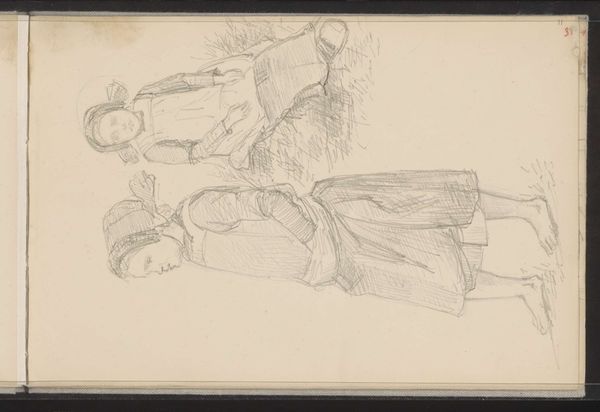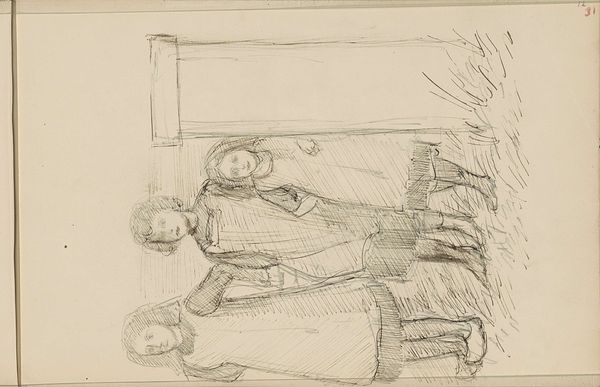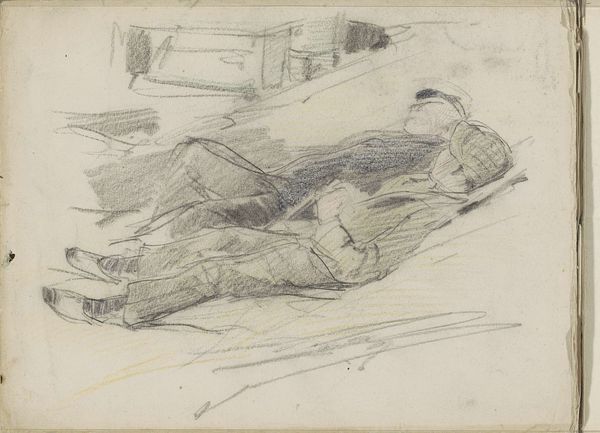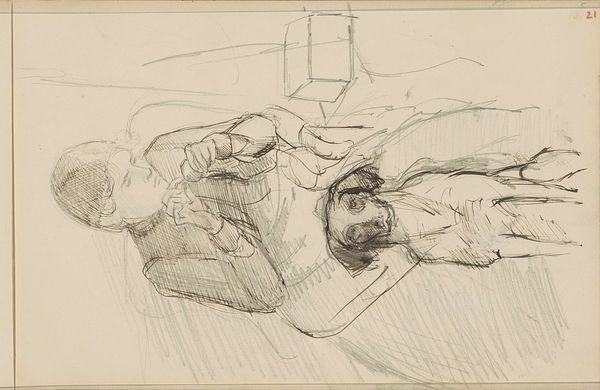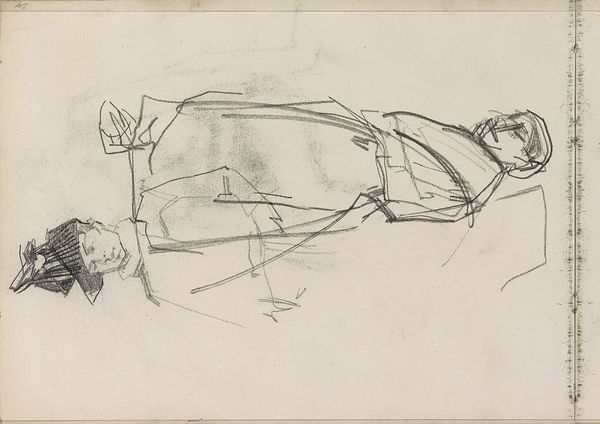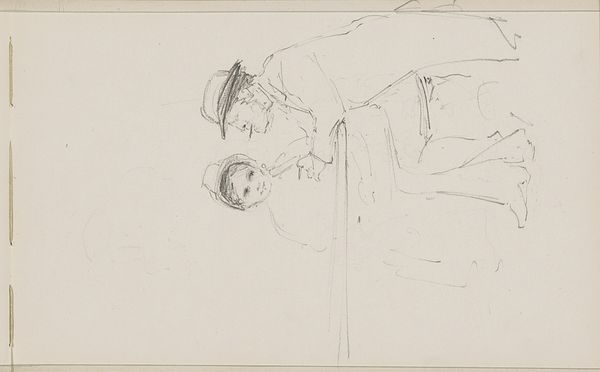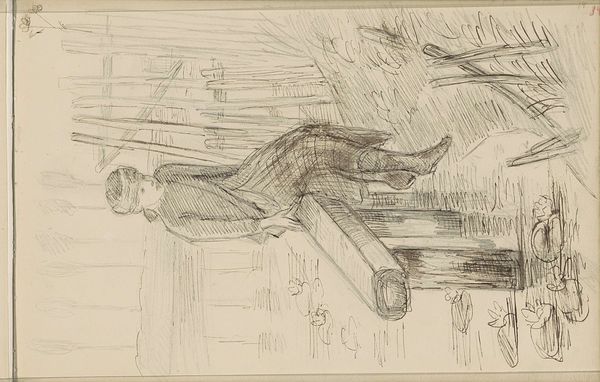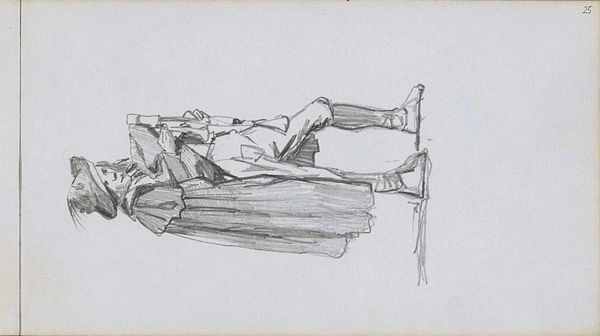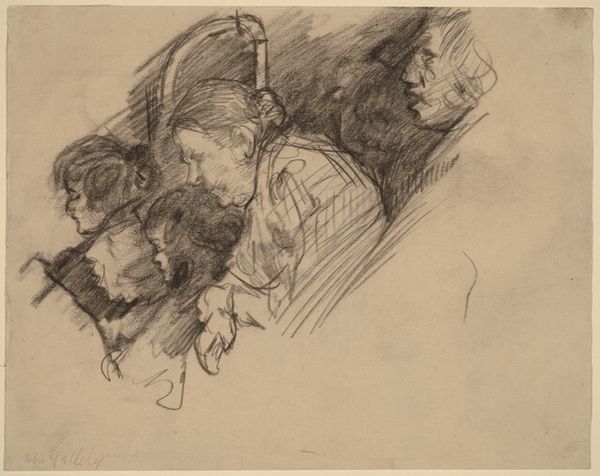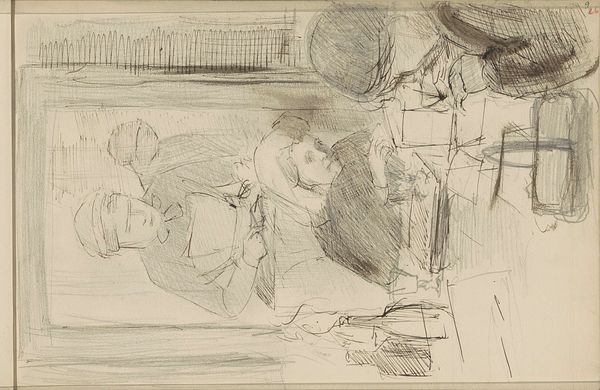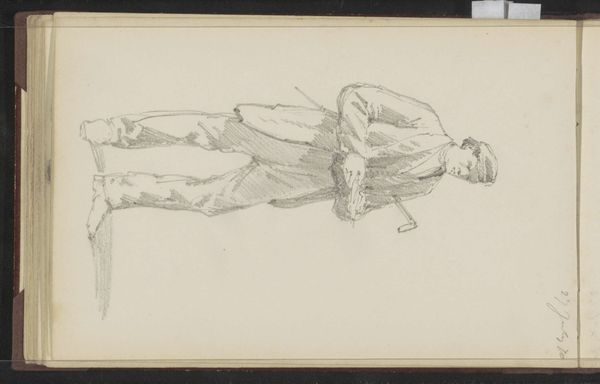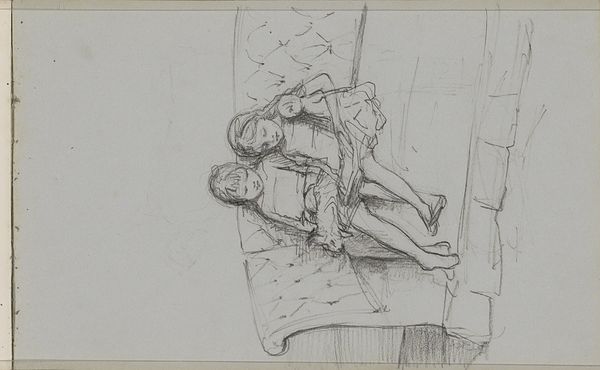
drawing, paper, pencil
#
portrait
#
drawing
#
paper
#
pencil
#
genre-painting
Copyright: Rijks Museum: Open Domain
Curator: Jozef Israëls created this intriguing piece, "Two Peasant Boys by a Wooden Box," sometime between 1834 and 1911. It's a pencil drawing on paper currently held in the Rijksmuseum collection. Editor: Immediately, I notice the quiet, almost melancholy mood it conveys. The delicate pencil lines, the somber posture of the figures, there's a real sense of stillness and maybe even fatigue. Curator: Israëls often depicted scenes of rural life, and was instrumental in what has come to be understood as Dutch realism. This work serves to emphasize the human aspect of daily existence, elevating genre painting through dignified portraiture. Editor: The sketch-like quality makes me wonder about its function. Was this a study for a larger work? I am intrigued by the quick rendering, the bareness of it speaks to me. I would be interested in researching the specific pencils he used. Do we know what paper was common at that time for quick studies? Curator: It is certainly compelling to consider it as a preparatory sketch. The work encapsulates a rising tide in social consciousness. Think about it, depictions of the working classes became increasingly common and valorized during this period. Editor: I'm drawn to the simplicity of the subject matter. A couple of boys, a wooden box. What's in the box, I wonder? Supplies, treasures? The box itself is clearly handmade. To me it's this grounding in materiality that resonates most. Curator: Indeed, it’s fascinating how Israëls prompts these questions. His contribution goes beyond mere representation. It signifies the shifting social priorities. His ability to convey dignity and worth without resorting to idealized images allowed people from a broad range of social classes to find value in these works. Editor: It highlights the raw realities of rural labor and hints at how laboring communities sustain their modes of making and living outside dominant systems of production and exchange. What does this scene suggest about access to markets and distribution of resources during the period, particularly within that Dutch context? Curator: Considering those social and cultural circumstances illuminates the artist’s intention. Thank you, it is a useful frame for thinking through all the issues present here! Editor: And for me too! These insights deepen my connection to it.
Comments
No comments
Be the first to comment and join the conversation on the ultimate creative platform.
